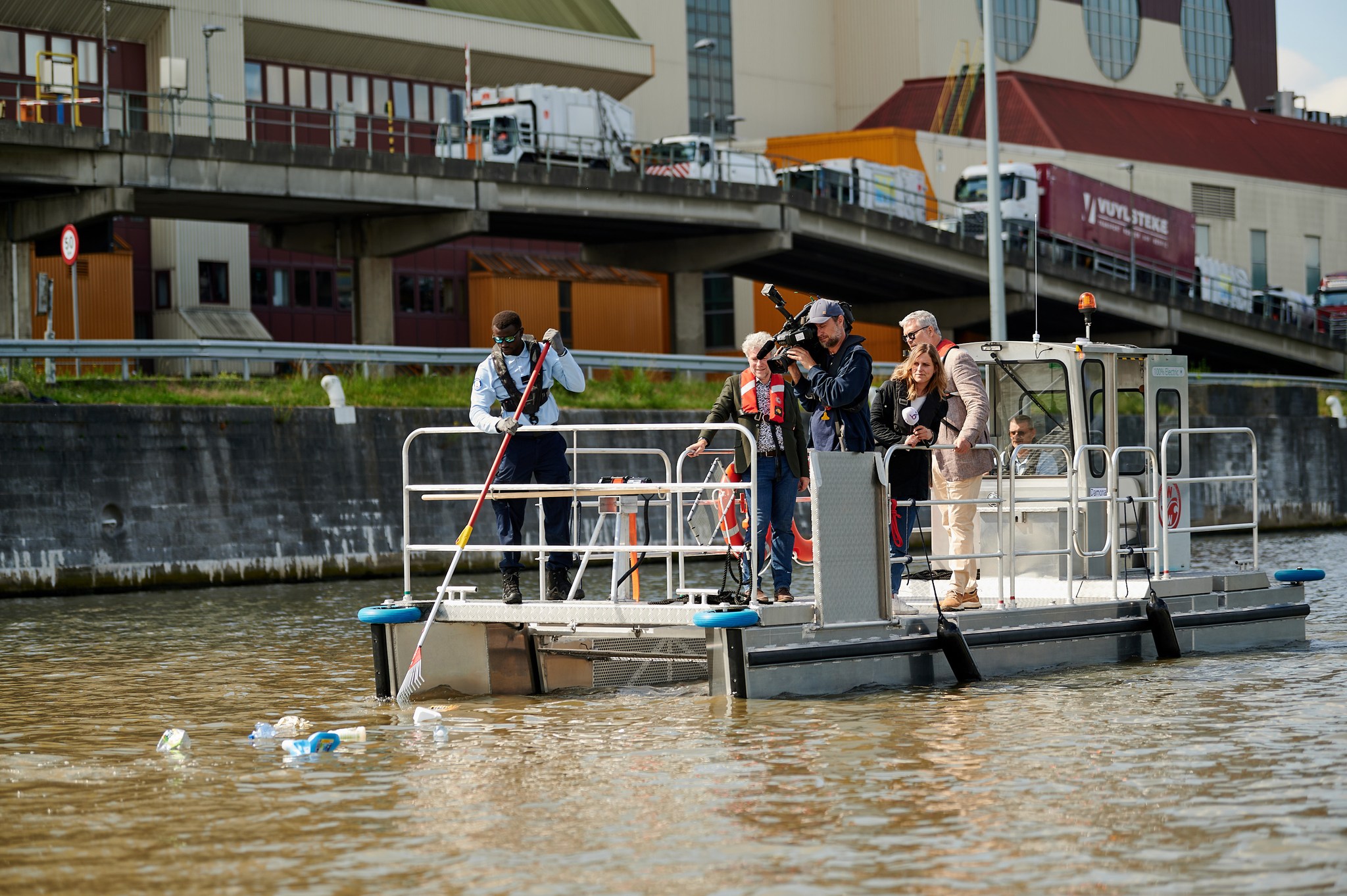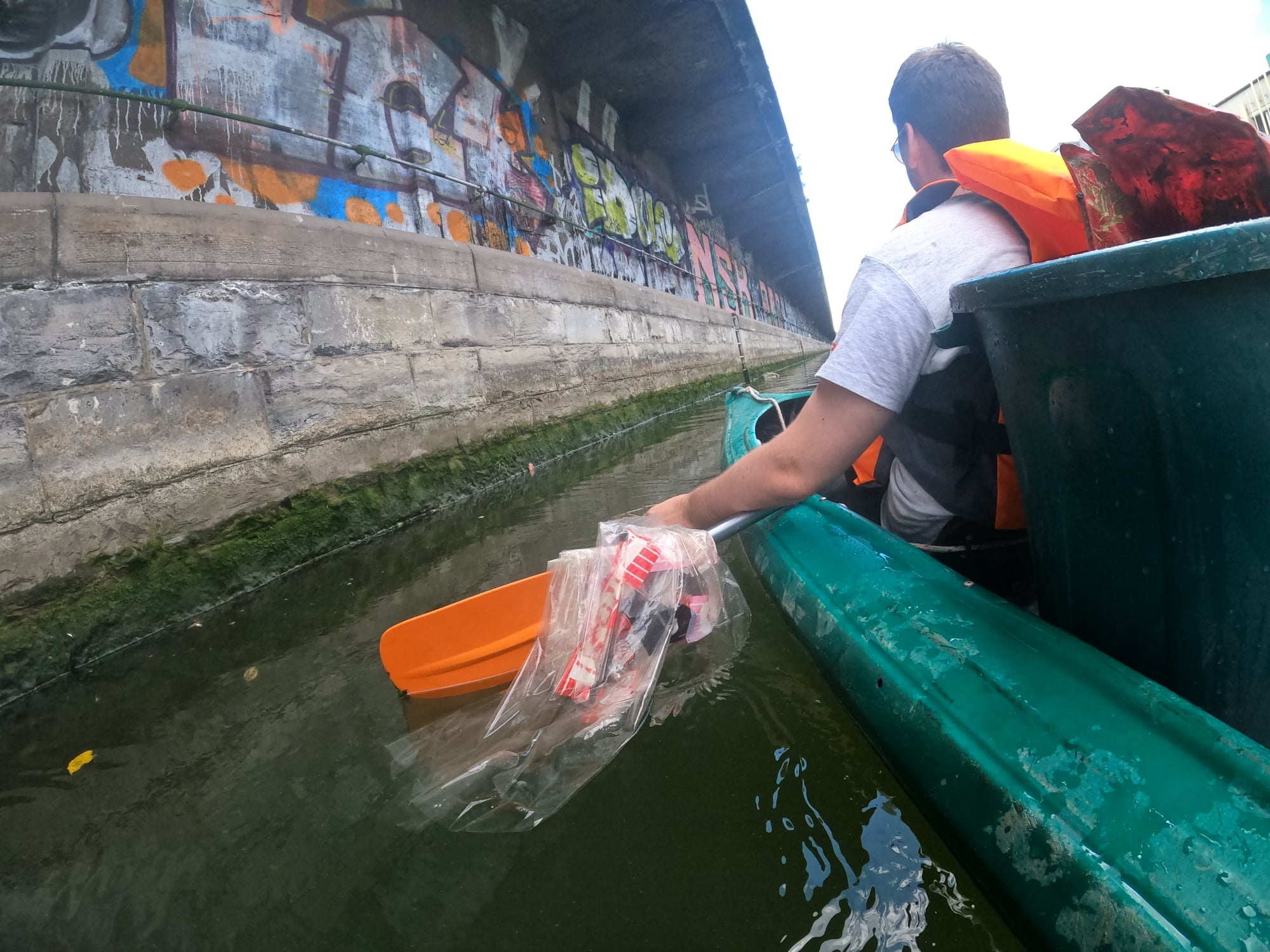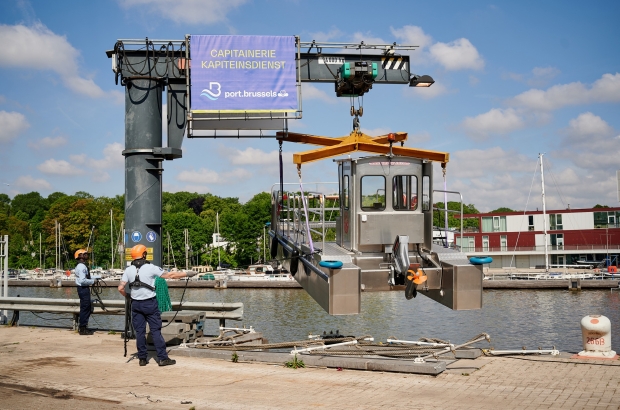- Daily & Weekly newsletters
- Buy & download The Bulletin
- Comment on our articles
Port of Brussels launches third canal cleaning boat amid ongoing awareness campaigns about waste
As the weather warms up and more Brussels residents enjoy either a trip on the canal or a stroll along its banks, the Port of Brussels has launched a third cleaning boat to tackle the waste that continues to pollute the waterway.
Damona is the first electric and zero-emission boat to be purchased by the Port of Brussels, joining sister ships Castor (2006) and Botia (2019). The other two cleaning boats have been operating at the port for several years. This third boat was built by the British company Water Witch Ltd and cost €80,000.
“Cleanliness is a common good – it is indispensable for our quality of life and the quality of our environment,” said Alain Maron, Brussels minister for the environment.
“As the canal is the lowest point in our region and also a huge storm drain, it collects a lot of the waste caused by urban life. This waste must therefore be collected regularly to prevent it from ending up in the sea.”
Concerned residents have noted an apparent increase in the amount of garbage found in the canal lately, as well as dead fish floating on its surface due to hotter weather in the last few weeks.

The local organisation Canal It Up has launched several awareness campaigns about the environmental health of the canal, including a recent one intended to draw attention to the fact that Brussels’ sewer system discharges into the canal, resulting in increased pollution during periods of heavy rain.
“The sewage system is leaking: 10 million m³ of sewage water pollutes our streams yearly, and we will never obtain healthy streams with clean water that’s full of life by carrying on this way,” the organisation wrote in an open letter.
“All rain water is guided directly into the sewers, after which the mix of sewage and rainwater overflows. Rainwater should be retained, reused, infiltrated and slowed down. Brussels needs an ambitious plan with an ambitious budget and an ambitious timeline – only then can we hope for healthy waterways.”
Canal It Up points to other major European cities that have managed to clean up their canals sufficiently for people to now swim in them, such as Copenhagen.
In Brussels, adding a third ship to the fleet of cleaning boats is one small step in the direction of a less-polluted canal.
Currently, the cleaning boats go out almost every day, weather permitting and depending on available personnel.
The fleet collects between 200 and 250 m³ of waste each year, not counting large items that are collected separately, such as mattresses, bicycles left on the banks or the waste collected by volunteers for organisations such as Canal It Up.

“The port is in the process of finalising the recruitment of two sailors who will soon join the team, which will make it possible to sail more often,” it announced in a press release.
Other efforts to tackle waste in the canal include regular maintenance of the banks and quay walls with high-pressure cleaners. The entire quay wall along the Royal Domain in Laeken was refurbished in 2018 and 2019.
Special efforts are also made for inland waterway skippers, who have a specific waste park at the Molenbeek lock, where paper, cardboard, PMD, glass and non-recyclable residual waste can be deposited.
“In the near future, a collection service will be offered for oily and greasy waste and small hazardous waste. There is also a joint service between the Port of Brussels and the Flemish Waterway (De Vlaamse Waterweg) for the collection of motor oil and bilge water,” the port said.
Lastly, the port announced the construction of a cleaning centre at the Anderlecht lock, where one of the three cleaning vessels will be permanently stationed. This is expected to save considerable time and allow for more frequent cleaning, including the southern stretches of the canal.
“I want to act ahead of time, together with everyone involved in public cleanliness, to prevent waste from ending up on the ground or in the canal,” Maron said.
“This is the aim of the first regional urban cleanliness strategy, on which we are currently working with the municipalities and all the actors involved to combat pollution effectively by tackling all its aspects: waste reduction, awareness-raising, punishment, appropriate urban planning, etc.”
Photos: Port of Brussels and Canal It Up



















